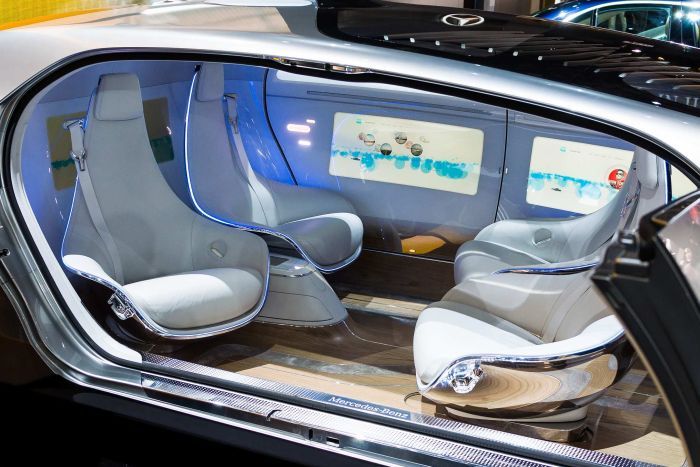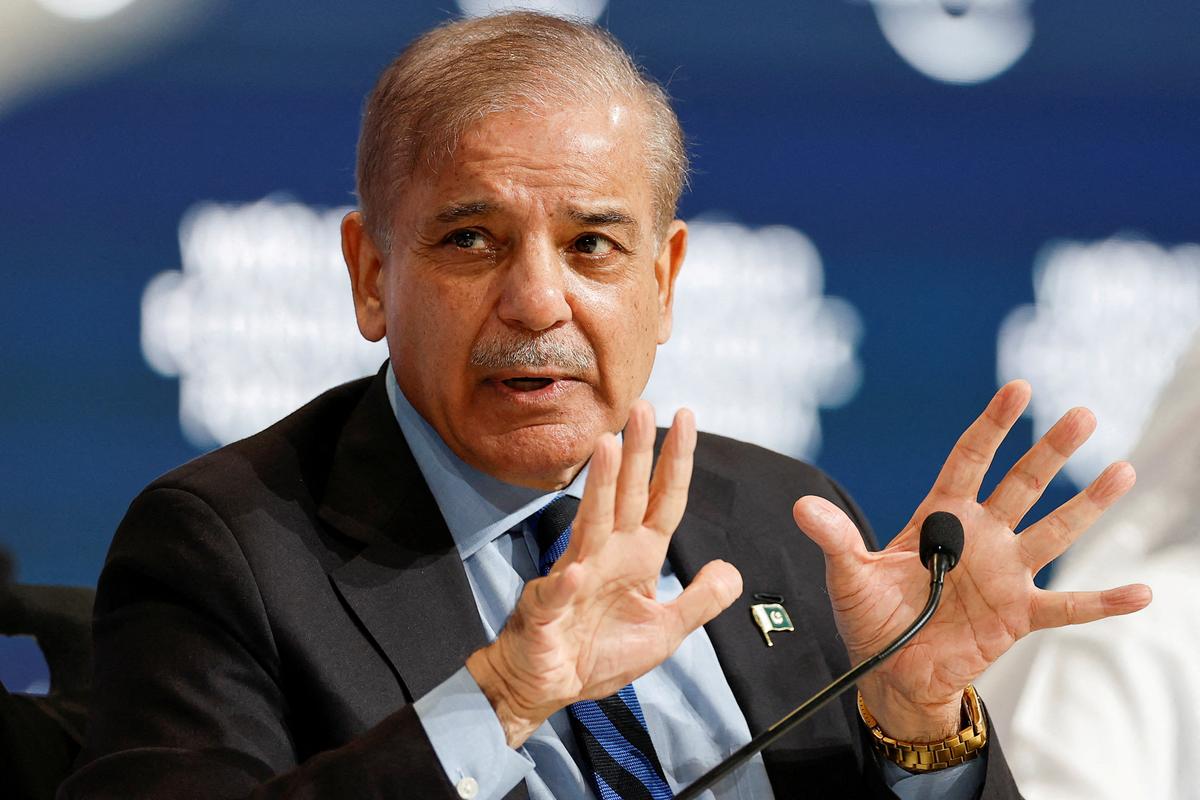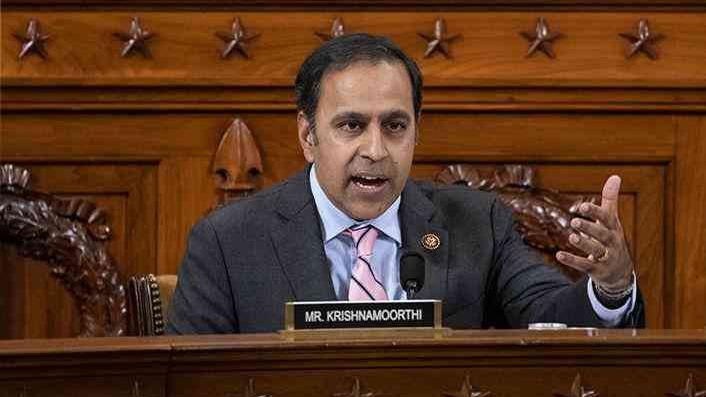Driverless cars: Everything you need to know about the transport revolution
Sat 11 Mar 2017, 13:32:01

Imagine being able to order a driverless car through an app on your phone, in much the same way as you order an Uber now.
But there's no more having to allow an extra half hour in case the traffic is bad — your driverless car will know the traffic conditions.
In fact, it will know if your train is running five minutes late and adjust your departure time accordingly, so you can spend the extra time getting dressed.
On the road, it will adjust its speed to avoid accidents and catch the green lights — all while you read the paper or catch up on emails.
A second driverless car rolls up at its regularly scheduled time to take the kids to school across town in the other direction.
In a seamless ballet, your morning routine is coordinated with everything calibrated to minimise time on the road and maximise your capacity to do other things.
But how close is this science-fictionesque vision?
Not so fast
Not so fast
The technology for driverless cars is here now, says Associate Professor Allison Kealy, who researches high performance positioning systems for intelligent transport at the Department of Infrastructure Engineering at the University of Melbourne.
Another obstacle facing Australia, according to Professor Kealy, is that it's essentially reliant on foreign technology development to realise the dream here.Another obstacle facing Australia, according to Professor Kealy, is that it's essentially reliant on foreign technology development to realise the dream here.
While driverless demonstration cars have been built here by the likes of Bosch, when it comes to commercially viable vehicles, we're talking about cars manufactured overseas, and designed to perform on the infrastructure that exists in Japan or Europe or the United States.
Another obstacle facing Australia, according to Professor Kealy, is that it's essentially reliant on foreign technology development to realise the dream here.Another obstacle facing Australia, according to Professor Kealy, is that it's essentially reliant on foreign technology development to realise the dream here.
While driverless demonstration cars have been built here by the likes of Bosch, when it comes to commercially viable vehicles, we're talking about cars manufactured overseas, and designed to perform on the infrastructure that exists in Japan or Europe or the United States.
Then there's the issue of regulation. Who is responsible if there's an accident? The individual or the car manufacturer? What about insurance?
Not to mention the human factor.
"The thought of a computer driving people around is very scary to a lot of people," says automotive engineer Stuart Ballingall, who is the director of transport futures for VicRoads and holds a similar position at the national level.
"This can't just be done by technologists in a corner, it's quite important we bring the community along on this ride as well."
What if you're in a driverless car and another car, driven by a human, is about to T-bone you? Can you seize back control and swerve out of the way?
What if you're in a driverless car and another car, driven by a human, is about to T-bone you? Can you seize back control and swerve out of the way?
Driverless cars are very unlikely to make mistakes, says Ian Christensen from the iMOVE CRC, a consortium of science and industry designed to bring driverless technology to market.
But driverless cars cannot undo mistakes made by human drivers around them, which means if another human driver is about to hit you, it's unlikely your driverless car can do much to avoid the accident.
What about a different scenario: a dog runs onto the road. How does the driverless car decide whether to swerve to avoid the dog if doing so would mean hitting a little girl on the opposite footpath?
This is easier, says Christensen. A driverless car will be able to discern objects in its path (and its alternate path) and take action to avoid collisions. It will also be able to distinguish between most life forms: not between a labrador and a golden retriever, maybe. But between a dog and a human, yes.
It will be programmed with a "relative negative consequence" of impact with each class of object and will always choose the "least bad" option. The car programmers are working on enabling the car to make additional animal identifications including horses, cows and sheep, and even kangaroos and moose.
The more severe case of this problem is the choice between hitting and potentially killing the child on the footpath, or crashing the car into a brick wall and potentially killing the vehicle's occupants. Here you have an ethical dilemma, Christensen says, that's been with us since the beginnings of motorised transport.
The more severe case of this problem is the choice between hitting and potentially killing the child on the footpath, or crashing the car into a brick wall and potentially killing the vehicle's occupants. Here you have an ethical dilemma, Christensen says, that's been with us since the beginnings of motorised transport.
There is still much debate over whether one outcome is more desirable than the other and therefore whether the car should be programmed to have that preference.
Humans are already forced to make those split-second choices on the road. The question is: Can society accept those calculations being made by a third-party computer programmer at the time of the car's design?
Plans are well progressed for automated vehicle trials in most Australian jurisdictions.
Plans are well progressed for automated vehicle trials in most Australian jurisdictions.
In Victoria, VicRoads and TransUrban are currently testing how vehicles with some degree of self-driving capacity (and that are on the market today) read and react to Victorian road markings and signs.
The second phase of this project will examine what digital infrastructure these cars might need, i.e. what wireless communications they'll require to receive data from variable speed limit signs or an overhead lane closure sign.
The Federal Government last month announced it's investing $12 million in a two-year program to test an advancement on GPS technology known as SBAS (Space-Based Augmentation System), which is essential to enable driverless cars to position themselves on the road.
Automotive industry technologists have indicated that positioning technology needs to be accurate to between a metre and 10 centimetres for driverless cars to work in Australia.
Geoscience Australia's John Dawson says the two-year project aims to
demonstrate this capability and then extend it down to 5 centimetres accuracy.
demonstrate this capability and then extend it down to 5 centimetres accuracy.
Dr Dawson predicts this technology could be operational within five years.
Within five years, on restricted routes, there will be cars in which humans can disengage from driving and do something else, like read a magazine, according to Ballingall.
Within five years, on restricted routes, there will be cars in which humans can disengage from driving and do something else, like read a magazine, according to Ballingall.
But the driver will still need to be available to respond and take back the driving if requested by the system.
In 10 years, expect to see four-lane freeways with two lanes for self-driving vehicles whizzing along at 120 kilometres per hour, six inches apart, and two lanes for standard vehicles, with an 80kph speed limit. That's the prediction from Christensen.
In 10 years, expect to see four-lane freeways with two lanes for self-driving vehicles whizzing along at 120 kilometres per hour, six inches apart, and two lanes for standard vehicles, with an 80kph speed limit. That's the prediction from Christensen.
In a few decades there could be full automation.
Engineers anticipate strong appetite amongst time poor professionals, young public transport and Uber users who don't want to own a car, mobility-impaired older people and people living with mental and physical disabilities.
But how soon all this becomes reality depends on how quickly governments and the community can wend their way through the web of issues associated with driverless cars and create the necessary regulation and reforms.
In Canberra, a parliamentary committee has begun hearings exploring the social issues associated with driverless cars.
Driverless cars would allow us to get more capacity out of our existing roads without adding more concrete and asphalt. Those chock-a-block car parks at outer suburban train stations, full by 7:00am, could be done away with. Driverless cars don't need to park — they can be free floating agents, continually circulating.
Those in this field imagine fully driverless cars will be owned by fleets, rather than individuals. People might have their own less advanced cars with some degree of self-driving capability, but even here the ownership model is expected to shift to fleet ownership over time.Lots of countries are on the cusp of this revolution.
The United States, Europe, Japan and Singapore are quite advanced, but each is struggling with its own obstacles.
Europe has high population densities and high environmental sensitivity — and when you can drive one hour and be in another country, there are lots of jurisdictional issues which make a cohesive approach difficult.
In the US, there is intense enthusiasm in places like California and Michigan, but other states can barely afford to mend the potholes in the road, let alone think about advancements. Christensen believes there's little prospect of the US getting a coherent national policy in place, although it has mandated all cars must be "electronically visible" to monitoring systems by 2019.
Christensen says Australia's state road authorities are in active discussions and acutely aware of the need for a coordinated approach that avoids a repeat of the problem of multiple rail gauges in the past.
Will driverless cars render the current tussle between Uber and taxi drivers obsolete by replacing them all with robots?
Will driverless cars render the current tussle between Uber and taxi drivers obsolete by replacing them all with robots?
It's likely to be a similar story to what's happening across the labour market, with some level of displacement of traditional jobs but demand for new skill sets.
Taxi drivers who see themselves exclusively as drivers might struggle. But for those who see themselves more broadly as participants in the sector, providing mobility as a service, there will be work.
Engineers say for science and engineering graduates, there will be working coming out of their ears.
Uber has flagged driverless cars as part of its ongoing business model.
Uber has flagged driverless cars as part of its ongoing business model.
Eventually the vision is that driverless cars will be just one element of integrated, intelligent transport systems.
One of the exciting possibilities is that driverless cars can take us beyond human capabilities. By removing the human error factor that's responsible for 94 per cent of accidents, we can bring down the road toll and the associated costs.
Driverless cars can communicate with each other and with roadside infrastructure through a specialised wi-fi system that allows the car in front to warn the car behind that it's slowing down.
Even better, cars can tell traffic lights they're coming, so that the lights can adjust the length of their green cycle to let the cars through before they change to red, improving traffic flows.
Cars have long had a level of automation. Anti-skid braking systems (ABS), cruise control and self-parking cars are already with us.
Cars have long had a level of automation. Anti-skid braking systems (ABS), cruise control and self-parking cars are already with us.
It's always been a progression and we'll see that continue, says Christensen.
He likens the anxieties around driverless cars to the adoption of smartphone technology once the public accepted its use wouldn't cause an outbreak of brain cancer.
But Christensen believes the smartphone experience suggests that once the trialling is done, the demand for access will become huge.
But Christensen believes the smartphone experience suggests that once the trialling is done, the demand for access will become huge.
Just as consumers have queued up to buy smartphones, they'll queue to get their hands on a smart car.
Some even argue that if driverless cars have the capacity to reduce road accidents by removing the chance of human error, they should be made compulsory.
Off-roaders and vintage car enthusiasts might have something to say about that.
But it's not outside the realm of possibility that driving a car might one day be as nostalgic as getting your milk delivered in glass bottles, making a call from a phone box, posting a handwritten letter or reading a newspaper.
No Comments For This Post, Be first to write a Comment.
Most viewed from International
Most viewed from World
AIMIM News
Latest Urdu News
Most Viewed
May 26, 2020
Which Cricket team will win the IPL 2025 trophy?
Latest Videos View All
Like Us
Home
About Us
Advertise With Us
All Polls
Epaper Archives
Privacy Policy
Contact Us
Download Etemaad App
© 2025 Etemaad Daily News, All Rights Reserved.





































.jpg)




